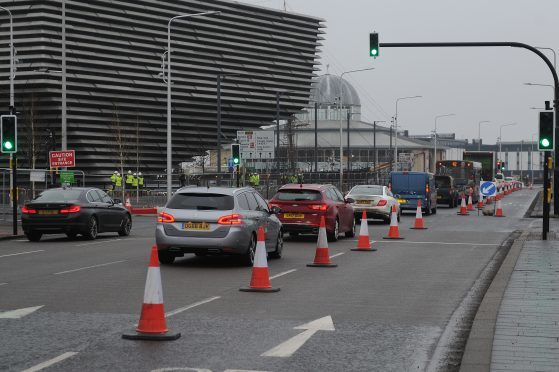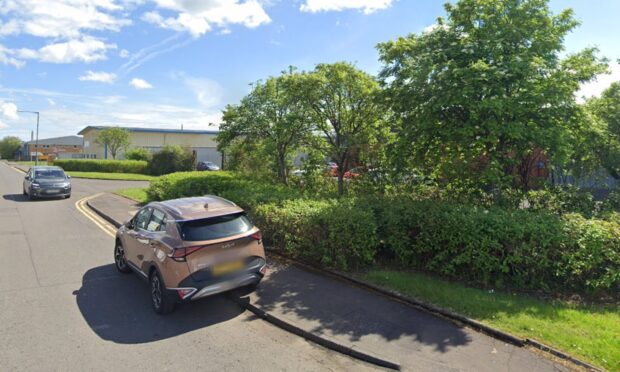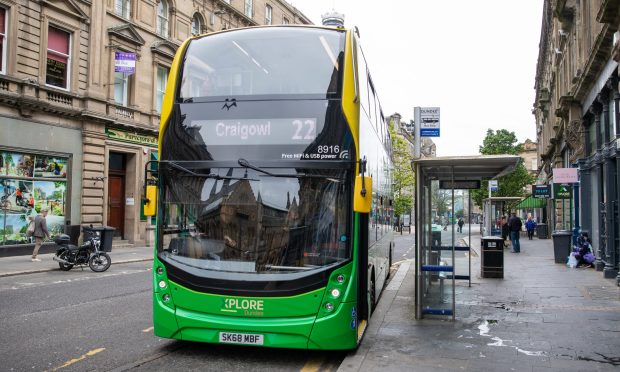Sir, – I have to wonder why the fence at the controversial office block being built close to the V&A could not have been built totally from inside the site.
The disruption to traffic is unacceptable – just to make a contractor’s work easier, while at the same time making hundreds of people late for work.
In addition, the decision to allow the Queen Street car park in Broughty Ferry to be taken over for contractors working on the railway station for Network Rail is also ridiculous.
Where are our Broughty councillors, Community Council and Broughty traders?
The council’s duty is to the Dundee public and not to save Network Rail costs, or enhance the profits of their contractor.
It is their problem, to work out which type of machinery is suitable for the site.
What would they have done if there had been a block of flats at the site, instead of a convenient car park?
Blocking off the car park will definitely have a bad effect on shops in the Ferry, which is short of parking anyway.
Who authorised this without any consultation?
The situation with the contractor carrying out the work, Carillion, now going into liquidation may make the matter considerably worse in future.
RJ Soutar, Camperdown Street, Dundee.
BBC no longer impartial
Sir, – “An Honest Man’s the Noblest Work of God” (Robbie Burns).
The inscription on former Labour leader John Smith’s beautiful gravestone on Iona could hardly fail to bring a tear to the eye.
On Tuesday’s UK-wide Six O’Clock News (January 9), BBC Scotland’s editor Sarah Smith announced that over 100,000 patients in Scotland spent more than four hours in emergency departments the previous week.
That figure was, in fact, for the whole year.
She apologised on Twitter, but omitted to correct the misinformation on BBC Six O’Clock News, where it was first aired.
The BBC was once a byword, internationally, for impartial reporting.
Perhaps not always where Scotland is concerned.
James Stevenson. Drummond Avenue, Auchterarder.
Carillion fail is a size thing
Sir – The collapse into administration of the Carillion conglomerate demonstrates yet again that companies can become too big to be manageable by their directors and management.
Let’s remember that Carillion is a fairly recent hybrid creation from the amalgamation of smaller but highly respected companies such as Tarmac, Wimpey, Mowlem and Alfred McAlpine.
The wide range of Carillion technical activities was not conducive to effective hands-on management either by its board or its senior management.
Having seen the same vainglorious management ambitions earlier afflicting Royal Bank of Scotland, surely there must be pause for thought by business executives, who might come to the conclusion that size isn’t everything and the rush into multi-national acquisitions and projects may not be such a good idea for company shareholders?
Derek Farmer, Knightsward Farm, Anstruther.
Oil giants can’t litter our seas
Sir, – Regarding the article in The Courier (“Report claims decom jobs ‘bonanza’ is a myth”, January 11), I have to agree there will be no bonanza in Dundee due to decommissioning platforms, for many reasons.
The £10 million spent by Port of Dundee owners Forth Ports on a heavy-lift decommissioning quayside was folly, as the huge ship that removes the topsides in one lift, Allseas Pioneering Spirit, would have difficulty getting close to the dock without a massive dredging operation.
However, the input from our SNP MSP, Mr Alex Neil, to leave the platforms in place and allow them to rust away is just about the most ill-informed suggestion I have heard in a long time.
All of these structures are a shipping and fishing hazard, to start with.
They all contain contamination in the form of oil, drilling muds and radioactive sources (depleted).
All of these by-products and consequences of drilling have to be disposed of safely during the scrapping.
The huge Shell Brent Spar took five years to dispose of due to contamination.
Initially, Shell wanted to dump it in deep water in the Atlantic, but Greenpeace activism and other public protests eventually ensured that did not happen.
Shell now propose to leave their five concrete structures in place in the North Sea, as it seems there was never a plan to remove them.
In contrast, Statoil have a plan to remove all their concrete structures at the end of their useful life.
There is no justification for leaving any of these structures in place.
All licence holders agreed in writing at the outset to leave the seabed as they found it or better at the end of their tenure.
They also signed bonds or Escrow accounts to cover the costs.
Let’s just make sure our children are not left with a major and costly clean-up operation after all the fat cats have gone home.
George Sangster, Woodland, Logie, Montrose.
Companies fail on fuel poverty
Sir, – Once again this year we are seeing energy companies failing in their social responsibility to tackle fuel poverty and help the most vulnerable in society.
For the last few years a warm home scheme discount of £140 has been available to the elderly, and people on certain benefits, to help with energy and heating costs at the times it is needed most, during the cold-weather period.
The problem with this scheme is that energy companies are not administering it properly and it is not benefiting people when it should.
They have until March 31 to make the payment, which is way too long.
This may be acceptable for people who pay monthly or quarterly by direct debit, who will then get a credit at the end of the winter period.
But people like myself who are on pre-payment meters are generally the last to receive it. In my case, despite applying in September, I am still waiting.
The scheme is devised to help vulnerable customers with energy costs through the coldest months of the year. It is supposed to come into effect before the cold weather, not afterwards.
This is a support system initiated by the Government to help those who at times have to chose between heating or eating. But the way it plays out in real terms means the same problem happens every year.
In order to break the cycle, there needs to be a change in the law so that energy companies have to pay the credit before December 1.
This way, the help will come at the time people really do need it most.
Gordon Kennedy, 117 Simpson Square, Perth.
Malt and maths mix up?
Sir, – I always enjoy reading Brian Townsend’s column in the The Menu magazine on Saturdays.
I must, however, take issue with him on his statement (January 13)that comparing the price of a one-litre bottle of whisky to that of a 70cl bottle requires a “nanosecond mathematical brain”.
If the price of a litre bottle is £42, that makes the cost of 10cl £4.20. The cost of 70cl would then be 7×£4.20 – which equals £29.40, which is marginally more than the price of a 70cl bottle.
If dividing by 10 and multiplying by seven requires extra-special brain power, things must have changed drastically since I was at school.
I would respectfully suggest to Mr Townsend that it would be advisable to do the sums before sampling the product!
Bill Young, 4 Elgin Gardens, Dundee.










